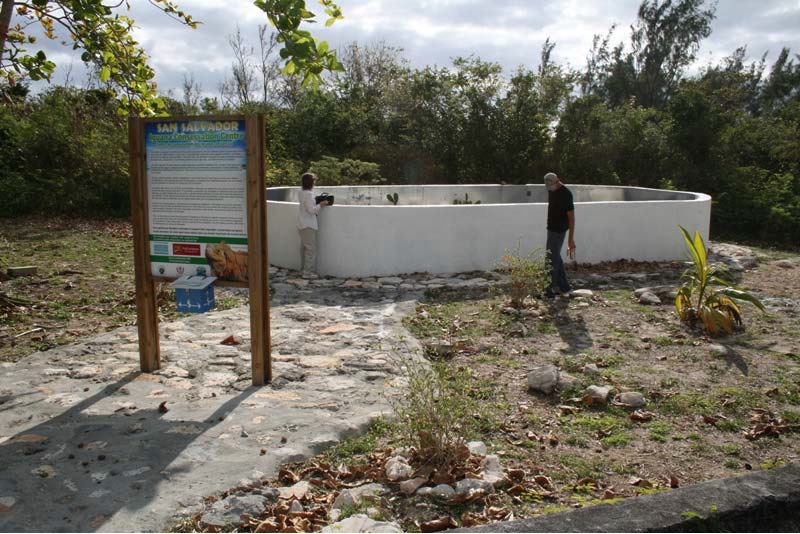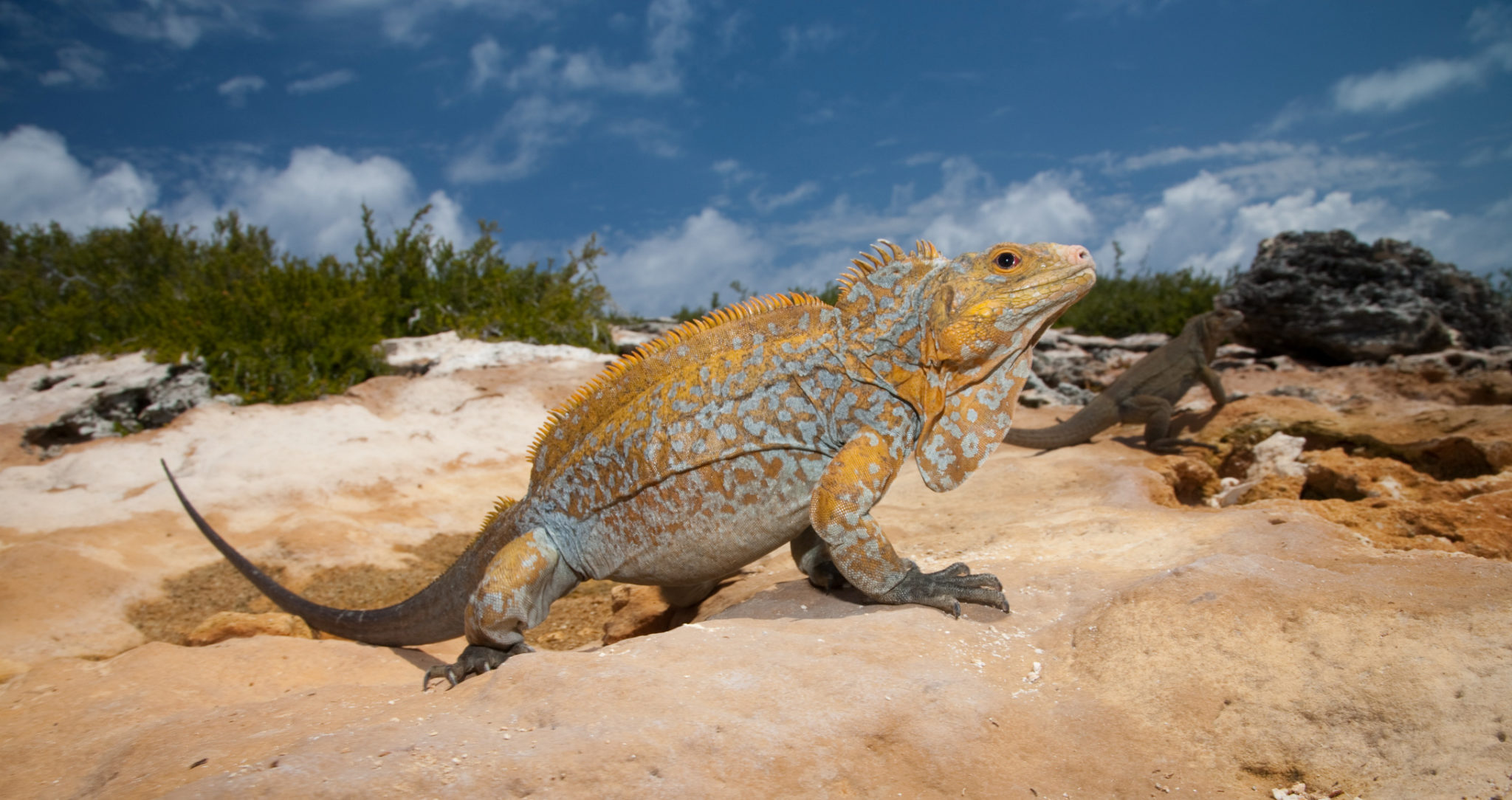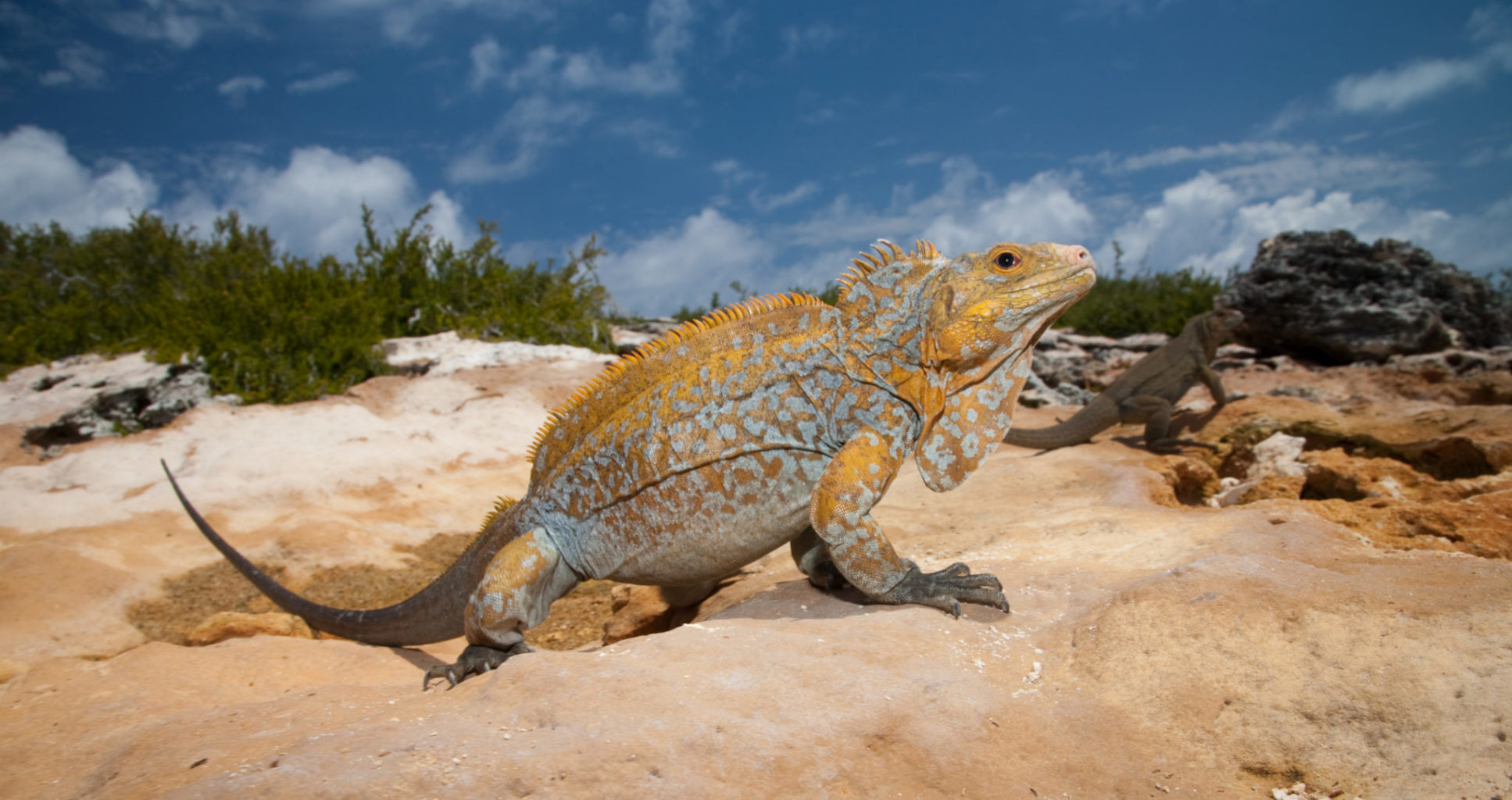In 2007, three groups on San Salvador Island (population 1,000) worked together to apply to the Bahamas government for a 22,328-acre (94-square-km) land and sea national park. The proposed park would encompass diverse marine and terrestrial habitats and protect the most threatened habitats and critical ecological services. The proposal has since been bogged down in government bureaucracy.
In an attempt to refocus attention on the proposal and jump-start conservation efforts on the island, the three groups have come together to propose a high-visibility conservation program with two components: an iguana headstarting facility and publication of a children’s book that underscores the plight of threatened Bahamian animals.
The endangered iguana is endemic to San Salvador Island. Roughly 500 individuals of this flagship species remain, scattered among six small low-elevation cays, where they remain vulnerable to a number of threats. The iguana facility will be built at the Gerace Research Centre (GRC), a premier research and educational facility operated by the College of the Bahamas. The GRC, Loma Linda University, and nonprofit group San Salvador Living Jewels will jointly manage the facility. Headstarted individuals will be released to carefully selected sites.
Once established, the facility should become financially self-sustaining, drawing support from local islanders and tourists who visit it. Similar reptile headstarting facilities on Grand Cayman Island, Costa Rica, and the Galapagos Islands have become important educational institutions.





